#japanese folktale
Text

A yokai that expects only faithfulness in love, even should she disappear without a word. Surprisingly warm-hearted despite her chilling nature.
#BriefBestiary#bestiary#digital art#fantasy#folklore#legend#myth#mythology#folktale#yokai#youkai#tsurara onna#tsurara nyōbō#icicle yokai#icicle woman#winter yokai#winter folklore#japanese folklore#japanese legend#japanese folktale
47 notes
·
View notes
Text

Kitsune (狐, きつね, IPA: [kʲi̥t͡sɯne̞], a type of mythical Japanese Fox Spirit who have superhuman intelligence, long life, and magic powers, such as shapeshifting
26 notes
·
View notes
Text







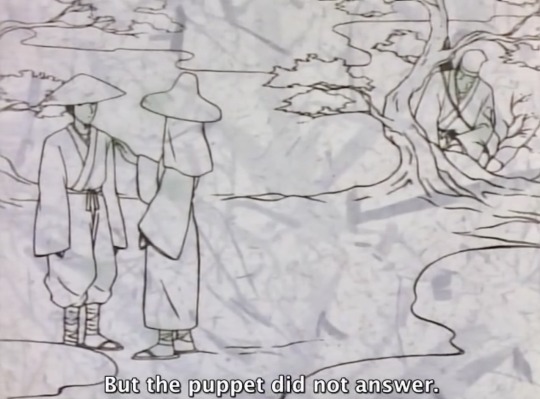
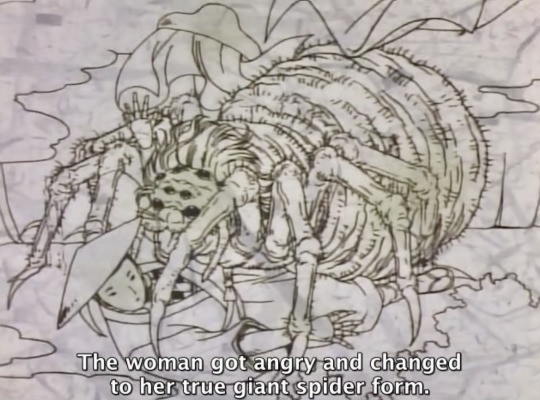





Case Closed : Detective Conan (Ep 167)
Interesting case involving a legend of a Yokai, Jorogumo. A person was found murdered in a warehouse surrounded by spider web.
#case closed#detective conan#heiji hattori#anime#japan#japanese folklore#japanese folktale#japanese yokai#jorogumo#yokai
29 notes
·
View notes
Note

NGL! that sounds freaking awesome
Agreed!
Honestly, Yokai are some of the most interesting legends/myths/folktales in my opinion.
The Gashadokuro ( or 'ōdokuro' meaning Giant Skeleton ) is one of the most interesting in my opinion. The name is an onomatopoeia for the sound their rattling skull.
They're giant skeletons made from the bones of dead soldiers and people who've passed that never received proper burials/funerary rites. This leads to them being unable to pass on, instead their souls are reborn as hungry spirits who yearn for what they once had.
These people would die with strong emotions ( pain and anger ) . Eventually, the spirits will begin to form a grudge against the living, being the cause of their transformation into Gashadokuro. When the bones of these victims come together to form a singular mass, they form the Gashadokuro.
When formed, they would roam countrysides, and despite being skeletal giants who's skulls would rattle and teeth would chatter, if they came across a human they would silently creep on them before either crushing them in their hands or biting off their head.
Since they are so large and full of anger, they are impossible to defeat. It is told that if one is to form it will continue to exist, so long as its rage is harbored. Their existence ceases once their energy and malice burns out completely .

This is a depiction made by Utagawa Kuniyoshi
( I couldn't find a direct year of when it was made )

Gashadokuro : ← Here
12 notes
·
View notes
Text
Our next topic..... Kitsunes
In early Japan, there was a deity named Inari that created intelligent foxes that he let roam the earth. Each one had a unique and specific title that was tied to the earth in some way, shape, or form. There was a sound, thunder, forest, mountain, ocean, river, earth, wind, fire, spirit, celestial, and dark kitsune. The only reason why they are so powerful is because of their connection to the Deity, who lived to trick people himself or send his pets to do it for him. Another reason why their so powerful is because of their tails. The more they have, the more powerful they are. The limit is 9 btw. Lastly, whenever they go into a human body and become one with you like every other spirit, you'll have the ability to use some of their elemental abilities. No, you can't use their abilities to become aang, but you can manipulate them to a certain extent. Moving wind with a thought, spreading fires that have already started, etc.
Warning: The majority of them ARE tricksters. So if you wish to summon one, protect yourself at all times.
#supernatural#supernaturalcommunity#folklore#mythology#mythical creatures#realkitsune#realkitsunes#teen wolf#kitsune#japan#japanese#japanese folklore#japanese folktale#japanese mythology#fox#foxes#spirituality#spirits#spirit#fox spirit#tricksterspirit#nogitsune#deity#deity work#deities#japanesedeity#japanesedeities#possession#elemental#supernaturalabilities
14 notes
·
View notes
Text

Christmas get-together
#monster#monsters#cryptids#cryptid#cryptozoology#cryptidcore#unreality#mothman#deerman#goatman#ningen#japanese folktale#japanese folklore#christmas#70s horror#friends#yule#weirdcore#dreamcore#anthro#anthropomorphic#found footage#instant photography
71 notes
·
View notes
Text
Sick. Stayed home. Went to the doc for covid testing. Got a narcotic cough syrup. So, I just took a dose, now that I'm home and can just fall asleep if needed. Waiting for it to make me too sleepy, I'm finally reading this, which I bought back in August last year!
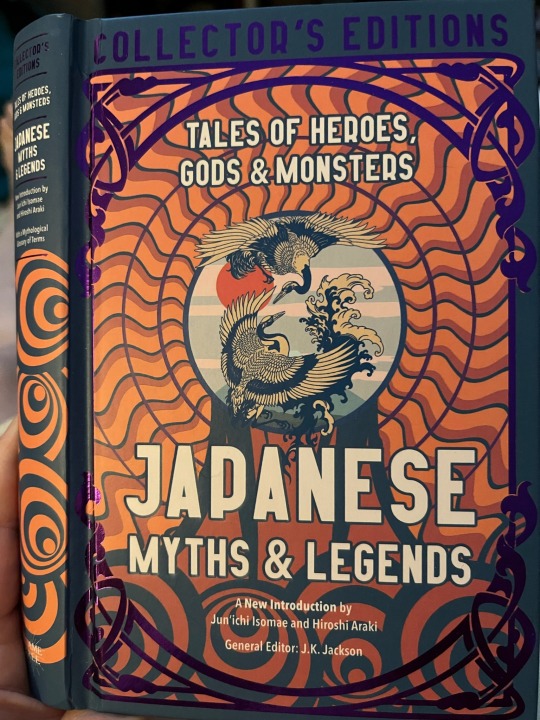
Wondering how many myths and legends in here are incorporated into Black Butler. Should at least be a few... like the two lovers separated by the river should be in here... somewhere.
I bought a small collection from this series of books. This is the first one I've cracked open.
#black butler#kuroshitsuji#japanese mythology#japanese legends#japanese folklore#japanese folktale#my stuff#stuff I bought#research#reference materials#apr 6 2023#books#book collection
39 notes
·
View notes
Text
The Wonderful Tea-Kettle

Tea and teapots are a big part of Kitchen Witchcraft, and just Witchcraft in general. Tea Pots are one of those gadgets that can easily hold all four base elements. The material they're made can help heighten their properties. A keeping a metal tea pot, such as one made of iron or brass, can help protect your home. Brass is especially good at harnessing solar energy. A ceramic tea pot may help conversations. They can also be more easily decorated, and thus the symbols on them can have their own meaning to the owner.
Tea Pots are also chock full of prosperity and cooperation. You can have a friend over to chat over a cup of tea, and a small amount of tea leaves can make a lot of tea. But tea pots are also symbols of calm and solidarity. Sometimes you just need a bit of time to yourself to relax. And, I don't know why, but when my Kitchen Starts to get chaotic and messy; once I clean out my used tea pot and put it back where it's supposed to be, I feel less overwhelmed about cleaning the rest.
The following is a western retelling of a Japanese folktale about a shape shifting tea pot. In the original story, the creature the tea pot shape shifts into is a Tanuki; a kind of raccoon dog. But this retelling by William Elliot Griffis in 1908 refers to the creature as a badger. Because, at the time, that was closest thing they had to translate.
A long time ago there was an old priest who lived in a temple and was very devout. He was also very poor. He cooked his own rice, boiled his own tea, swept his own floor, and lived frugally as an honest priest should do.
One day the kettle in which he boiled water for his tea got broken, and he did not know what to do, as he had no money to buy a new one. But the next morning, behold! a shiny brass tea-kettle was sitting outside his door. Overjoyed he returned thanks, and built a fire in the square fireplace in the middle of the floor. A rope and chain to hold the rice-pot and tea-kettle hung down from the covered hole in the ceiling which did duty as a chimney. A pair of brass tongs was stuck in the ashes, and soon the fire blazed merrily. At the side of the fireplace, on the floor, was his tray filled with tiny teacups, a pewter tea-caddy, a bamboo tea-stirrer, and a little dipper. The priest having finished sweeping the ashes off the edges of the hearth with a little whisk-broom made of hawk's feathers, was just about to put on the tea when "suzz, suzz," sang the shiny tea-kettle spout; and then "pattari—pattari!" said the lid, as it flapped up and down, and the kettle swung backward and forward.
"What does this mean?" said the old priest with a start; for, wonder of wonders, the spout of the kettle had turned into a badger's nose with its big whiskers, while from the other side sprouted out a long bushy tail!
"Ho, ho!" cried the priest, with a long string of Japanese words which would sound strange to you. And in terror he dropped the tea-caddy, spilling the green tea all over the matting, as four hairy legs appeared under the kettle, and the strange compound, half badger and half kettle, jumped off the fire, and began running around the room. To the priest's horror it leaped on a shelf, puffed out its belly and began to beat a tune with its fore-paws as if it were a drum. The old priest's pupils, hearing the racket, rushed in, and after a lively chase, upsetting piles of books and breaking some of the teacups, secured the badger, and squeezed him into a keg used for storing pickled radishes. They fastened down the lid with a heavy stone, and felt sure that the strong odor of the radishes would kill the beast, for no man could possibly survive such a smell, and it was not likely a badger could.
The next morning the tinker of the village called in and the priest told him about his strange visitor. Wishing to show him the animal, he cautiously lifted the lid of the cask, lest the badger might, after all, be still alive, in spite of the strong vinegar pickles, when lo! there was nothing but the shiny brass tea-kettle. Fearing that the utensil might play the same prank again, the priest was glad to sell it to the tinker, who on his part secretly thought the priest had been dreaming, and was glad to give another kettle in exchange for it, and some cash to boot. He carried it proudly to his junk shop, though he thought it felt unusually heavy.
The tinker went to bed as usual that night with his tiny paper shaded lamp just back of his head. About midnight, hearing a strange noise like the flapping up and down of a pot-lid, he sat up in bed, rubbed his eyes, and there was the bewitched tea-kettle covered with fur and sprouting out legs. In short, it was turning into a hairy beast.
"Don't beat me or shut me in a vinegar keg," it said, "for I am really kind-hearted and wish you well."
"What can I do for you?" asked the tinker.
"Feed me a little rice now and then, and don't put me on the fire as that stupid priest did. Look here."
Going over to a corner of the room and taking a fan from the rack, the badger climbed up on the frame of the lamp, and began to dance on its one hind leg, waving the fan with its fore-paw. It played many other tricks, until the man started up, and then the badger turned into a tea-kettle again.
"I declare," said the tinker as he woke up next morning, and talked the matter over with his wife. "I'll just 'raise a mountain' on this kettle. It certainly is a very highly accomplished tea-kettle. I'll call it by some high-sounding name and exhibit it to the public."
"You've been dreaming," scoffed his wife; "that's only an ordinary brass tea-kettle."
"Just watch it and see," replied the tinker.
So they watched the next night, and sure enough it turned into a badger again.
The delighted tinker hired a professional showman for his business agent, and built a little theatre and stage. Then he gave an order to a friend of his, an artist, to paint scenery, with the sacred mountain Fuji yama in the background and cranes flying through the air, a crimson sun shining through the bamboo, a red moon rising over the waves, with golden clouds and tortoises and such like. Then he stretched a tight rope of rice-straw across the stage, and the handbills being stuck up in all the barber shops in town, and wooden tickets branded with "Accomplished and Lucky Tea-Kettle Performance, Admit One,"—the show was opened. The house was speedily filled, the people coming in parties, bringing their teapots full of tea and picnic boxes full of rice, and eggs, and dumplings made of millet meal, sugared roast-pea cakes, and other refreshments; because they came to stay all day. Mothers brought their babies with them, for the children enjoyed it most of all.
Then the tinker, dressed up in his wide ceremonial clothes, with a big fan in his hand, came out on the platform, made his politest bow and set the wonderful tea-kettle on the stage. At a wave of his fan, the kettle ran around on four legs, half badger and half kettle, clanking its lid and wagging its tail. How the children shouted; and so should you and I if we could only have been there! Next it turned into a badger, swelled out its body and beat a tune on it like a drum. It danced a jig on the tight rope, and walked the slack rope, holding a fan, or an umbrella in its paw, stood on its head, and finally at a flourish of its master's fan became a cold brass tea-kettle again. The audience were wild with delight, and as the fame of the wonderful tea-kettle spread, many people came from great distances to see it perform.
Year after year the tinker exhibited the wonder until he grew immensely rich. Then he retired from the show business, and out of gratitude took the old kettle to the temple again and deposited it there as a precious relic. The old priest was given a goodly sum of money to do nothing else but take care of it; and all his life it had all the rice and dumplings it wanted. After his death it turned into an ordinary kettle, and has stayed so ever since. If you don't believe it, you can go to the temple some day and see it for yourself.
#tea#tea pot#tea magic#kitchen witch#kitchen witchcraft#witch#japan#japanese folktale#food and folklore#fairytale#folktale#fairy tales#folktales#badger#Tanuki#raccoon#klickwitch#magic
10 notes
·
View notes
Text
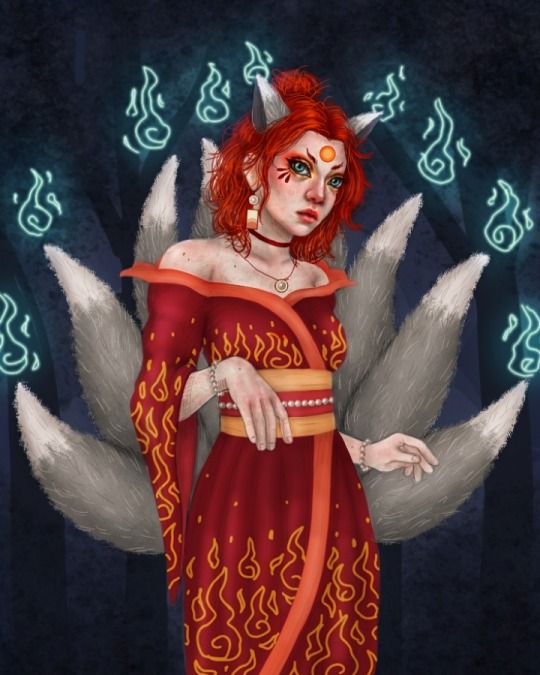
Here's a kitsune!🏮
In japanese folklore, Kitsune are a type of yokai that appear as foxes that possess paranormal abilities that increase as they get older and wiser🎴
All foxes have the ability to shapeshift into human form, and this is how I thought they could look like!🎐
#yokai#kitsune#fox#foxes#kitsune girl#yokai art#kitsune art#japanese folklore#japanese folktale#japanese yokai#artists on tumblr#procreate#art#digital art#digital illustration#drawing#photoshop#artist support#digital portrait#portrait#fox girl
8 notes
·
View notes
Photo
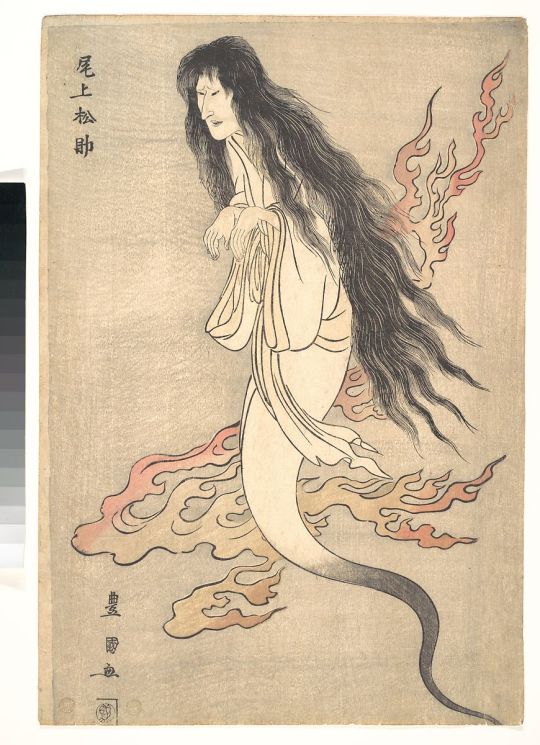
Ghost of the Murdered Wife Oiwa, in "A Tale of Horror from the Yotsuya Station on the Tokaido Road", 1812
Utagawa Toyokuni I
woodblock print
Metropolitan Museum of Art
#ghost#japanese horror#japanese art#japanese 1800s art#1800s art#horror illustration#yurei#japanese folktale#japanese folklore#metropolitan museum of art
122 notes
·
View notes
Text
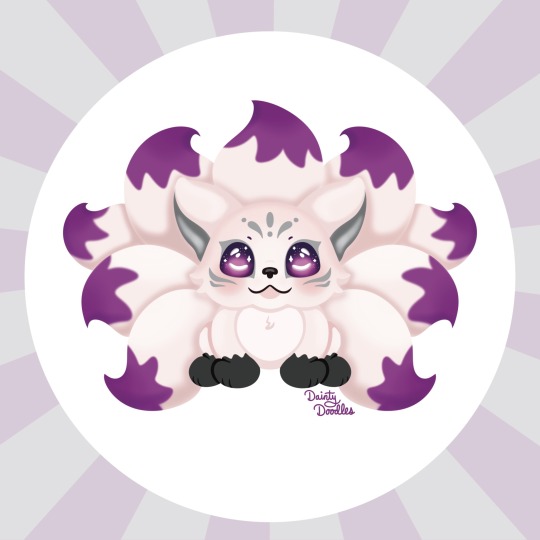
Asexual flag Kitsune
#art#artist#digital art#digital artist#kawaii#procreate#uwu uwu uwu#drawing#illustration#commissions#japanese oni#japan#japanese mythology#japanese#japanese yokai#japanese folktale#kitsune#nine tailed fox#fox yokai#pride#pride month#asexual#lgbtq pride#pride2023#happy pride 🌈#asexual pride#lgbtq#lgbtq community#lgbtqiia+#lgbtq artist
9 notes
·
View notes
Text
Otona no Douwa: A French review (3)
OAV 4: The Battle of the Monkey and the Crab
Created by and designed by Kouichi Takada. Director of animation: Masao Suwa.

The plot:
After a long journey, a tired and hungry boy arrives in a village in the middle of nowhere. He meets a mysterious young girl that guards a tree on which is a lonely kaki. The boy climbs on the tree and eats promptly this last kaki, shocking the young girl, who retrieves one of the grains of the fruit fallen onto the ground. Now with his belly full, but still thirsty, the young traveller wanders throughout the village’s street, noticing nobody is out. When he enters a small inn and asks for water, everybody looks at him coldly and gives him a silent treatment. Understanding something is very wrong with the village, the boy tries to leave but somebody throws a rock at his head. Understanding the villagers want to do him harm, the boy escapes and reaches the exit of the village, where he meets again the young girl. He asks her why everybody is so hostile, and she says he ate the last kaki. The villagers catch the boy, and tie him to a pole, before throwing rocks at him.
Later the girl comes near him with a pair of great scissors. The wounded traveller asks him if she can at least bring him some water. The girl cuts the rope tying him - he falls on the ground and breaks his neck.

The reviewer’s opinion: For the writer of the article, this was the less liked story, due to it having a big pacing problem, and being very gratuitous in its violence, as the young boy is tortured horribly for what seems to be a minor and hardly explainable crime. In fact, if someone doesn’t know the fairytale this is based on, one will wonder why an entire village wants the death of someone who ate a fruit...
In the Japanese folktale, the characters are all animals - the story is about a crab, who finds a rice ball, and a monkey, who finds a kaki seed. The monkey, jealous of the crab’s rice ball, wants to exchange it for his grain - saying “It isn’t much now, but it will grow into a tree filled with kakis you’ll be able to eat!”. The crab accepts the exchange, but once the tree is grown, the crab understands he can’t climb on it. When the monkey returns, he easily climbs on the tree and steals the kaki. Throwing a ripe one at the crab (who was begging him to give him one), he actually kills the beast. The children of the crab, learning about this, decide to avenge their father and kill the monkey. The OAV is of course very different from the folktale, though key elements are kept - the crab is here the red-haired girl armed with great scissors, for example. The reviewer says there is nothing noticeable or exceptional about this OAV, and they think it is the weakest of the six episodes of the series.
OAV 5: Crackling Mountain
Created by Hiroshi Takaya.
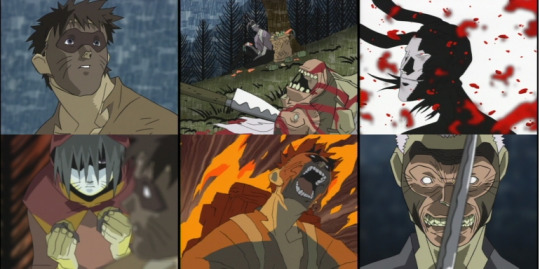
The plot:
A village in the Japanese countryside has its fields constantly stolen from by a thief. This thief, a rabbit, is actually the best friend of a tanuki. The tanuki is a kind man that likes to help other people, but one day he catches the rabbit in the act. Unfortunately for the tanuki, not only is he accused of the theft, but he is also blamed for the murder of the field-owner’s wife (actually killed by the rabbit). Seeing he is condemned in advance, the tanuki has no other choice than flee the village.
As he wanders in the countryside, the tanuki encounters a young girl with a pack of wood on her back - it seems she twisted her ankle, and out of kindness he decides to take her burden. As he goes forward, he hear strange sounds behind him, crackling sounds - he soon understand that the young girl set fire to the wood he carried on his back. The maiden explains she is the daughter of the farmer whose wife was killed, and she wants to avenge her mother’s murder. The fire wounds the tanuki, who flees and arrives in a panick to the house of one of his friends. His friend, seeing the burned back of the tanuki, uses a product to soothe his pain... but mentions that he is now a searched man with a heavy bounty on his head. Understanding that his friend wants to sell him, the tanuki jumps out of the window, and running away ends up meeting the rabbit again. He pursues him all the way to a lake, and he takes a boat to go after him through the body of water... understanding too late that the rabbit digged a hole in the boat. The rabbit insults the tanuki, saying he is an idiot, but he still saves him from drowning in order to get the bounty. The tanuki, now gone completely mad, tries to strangle his former friend - but villagers arrive and save the rabbit. Convinced that the tanuki is indeed a criminal, they give him to the farmer who, to avenge his wife, beheads the tanuki and places his head at the entrance of the village.

The reviewer’s opinion: It is an interesting twist on the original folktale. As with the previous fairytale, the original story deals with animals, but unlike the previous OAV (which turns the animals into full humans), this one decides to give them human bodies with animal masks, to clearly identify their original roles in the story. However the tone and plot of the story was massively changed (even though the original was just as morbid).
The original tale goes as such: an old couple adopts a hare, and a tanuki one day comes to steal all of their food. The tanuki is captured by the couple, but he begs the old woman to set him free. She takes pity on him, but as soon as he is free he kills her, makes a stew out of her corpse, takes her shape and awaits for the return of the old man - to which he feeds his wife’s own body. The hare, who saw the entire scene, decides to avenge the death of his owner but hurting as much as he can the tanuki. He puts on fire a pile of wood the tanuki carries on his back, then pretends to heal his wounds but in truth puts hot pepper on his burns, and finally he drowns him. In the original folktale the hero is the hare, while the tanuki is a monster - and the OAV rather reverts their role. The OAV also depicts in fascinating visuals the growing madness of the tanuki: when he finally gives in to insanity as everybody persecutes him, his animal mask breaks.
OAV 6: Urashima Taro
Directed by: Soichi Masui. Design and animation: Toshiharu Sugie.

The plot:
Urashima Taro is a young fisherman who likes to spend his evenings in town with women. One night, he saves the life of an old woman called Okame, who was attacked by a group of men. To reward the fisherman, she asks him to follow her to a very special palace - he does it, but half-heartedly, due to Okame’s repulsive aspect. In the famous palace, Urashima Taro is taken to a room where young girls bring him a strange substance he has to smoke... He starts hallucinating, and surrounded by smoke and maidens, Urashima Taro cannot tell reality and imagination apart anymore.
Cut off from all reality, he spends without realizing it several years in the palace, fulfilling all of his fantasies and phantasms by sleeping with an uncountable amount of women who satisfy all of his desires in a psychedelic world. But what Urashima Taro doesn’t know is that in fact he is a prisoner, locked in the palace with other men who are all constantly dreaming and hallucinating due to the substances they are forced to smoke every day. One day, Okame takes a completely drugged Urashima to the mistress of the palace, the princess Ryuu. Still hallucinating, Urashima Taro doesn’t see the true aspect of the princess, who is a zombie covered in fish scales - he rather sees a splendid young woman, and has sex with her. Satisfied, Ryuu gifts the fisherman with a pretty little box, before sending him back to his cell.
More years pass, and Urashima Taro slowly comes to his senses. Returning to reality, he tries to flee the cursed palace. He escapes but discovers that several dozen of years have passed: his house is in ruin, and his mother died of heartbreak upon his disappearance. Hopeless, Urashima Taro opens the small box of Ryuu, which contains a tiny bit of the hallucinogenic drug of the palace. He smokes it one last time before throwing himself off a cliff.

The reviewer’s opinion: A very... unique reinterpretaton of the famous legend of Urashima Taro. The reviewer found interesting the idea of turning Taro’s exile in the princess’ palace into an imprisonment, the fisherman becoming a slave to drugs and hallucinations. The reviewer however was disappointed that the “unreal” aspect of it all wasn’t played more - because there was something to dig there. It is also the most erotic of the OAV, with very blunt and unsubtle phallic metaphors, and the hero constantly having sex with all the girls he finds - plus the psychedelic scenes can easily hurt both the eyes and the brain. It is not the best OAV of the group, but the scene between the hero and the princess Ryuu traumatized the reviewer.
CONCLUSION:
The reviewer explains that clearly these OAV are not for everybody. Someone has to enjoy sadistic horror stories to enjoy those episodes - even if the fairytale they adapt aren’t very kind themselves. Each OAV can be appreciated on its own, and they are quite unequal in term of quality - some clearly much better than others.
The reviewers thought that the three adaptations of the Grimm fairy tales are superior to the three adaptations of the Japanese folktales. The reviewer notably enjoyed deeply the two episodes done by Hiroshi Takawa (Hansel and Gretel, and Crackling Mountain). In these two OAV there is a personal style that truly sets them apart, and very harsh stories delving fully into paranoia and injustice. One last interesting thing: those OAV do not come out of nowhere, since this whole series was based on a book released in Japan. It is called “Hontou wa Kowai Sekai no Douwa” (”Really creepy fairytales from around the world”) - the book contains 38 fairytales, but all rewritten and presented in their most terrifying and disturbing aspect.
The reviewer notably leaves a link to the book’s page on Bookwalker, for those interested:
https://bookwalker.jp/dec2858a89-3672-414a-b31e-3fccd743f443/%E6%9C%AC%E5%BD%93%E3%81%AF%E6%80%96%E3%81%84%E4%B8%96%E7%95%8C%E3%81%AE%E7%AB%A5%E8%A9%B1/
#otona no douwa#japanese fairytales#anime#fairytale anime#japanese folktale#horror anime#the battle of the crab and the monkey#urashima taro#crackling mountain#hiroshi takawa
5 notes
·
View notes
Text
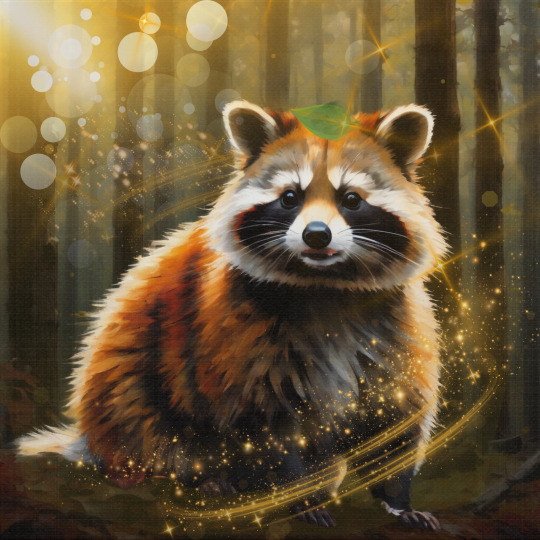
Bake-danuki (化け狸), a mischievous shape shifting Yōkai (妖怪) found in Japanese mythology, resembling a tanuki, or Japanese Racoon Dog.
#tanuki#yōkai#bake danuki#mischevious spirits#mystical beings#japanese yokai#alteredai#japanese legends#japanese folktale#japanese folklore#mythical creatures
20 notes
·
View notes
Photo
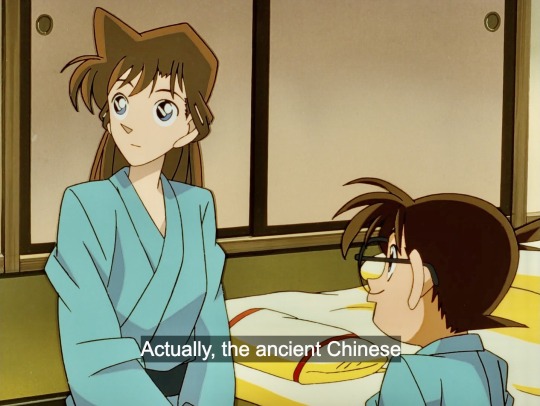




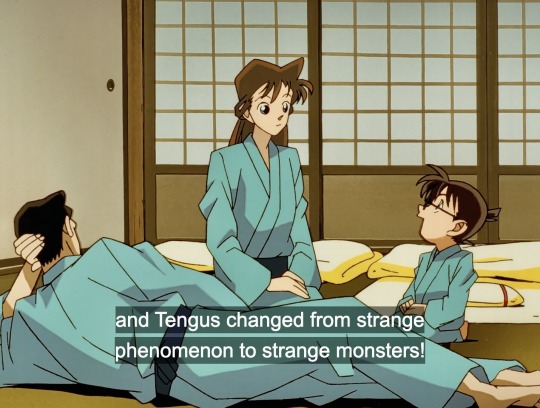


Detective Conan: Case Closed (Ep 52)
I suddenly remembered the movie, The Great Wall (2016) set during the Song Dynasty where it was mentioned that a meteor crashed was believed to be a bad omen. Shortly after they were attacked by the creatures, Taotei.
37 notes
·
View notes
Text

MYTHS AND LEGENDS OF JAPAN by R. Hadland Davis. (London: Harrap, 1912) Thirty-two illustrations by Evelyn Paul.
This has to be one of the loveliest collections I’ve ever seen. I wish I could post all of Evelyn Paul’s exquisite illustrations but you’ll need to follow the link to see the rest. The color has been restored on those I’ve shared here to match the book’s plates. [New editions are available.]

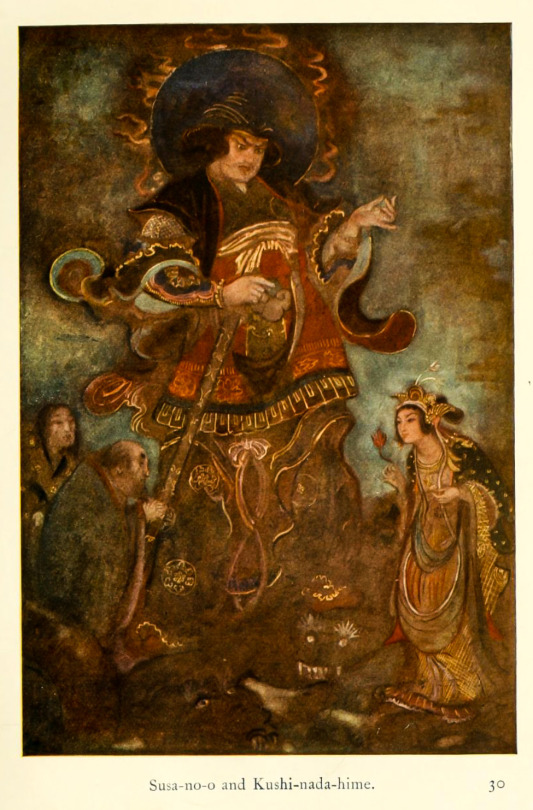

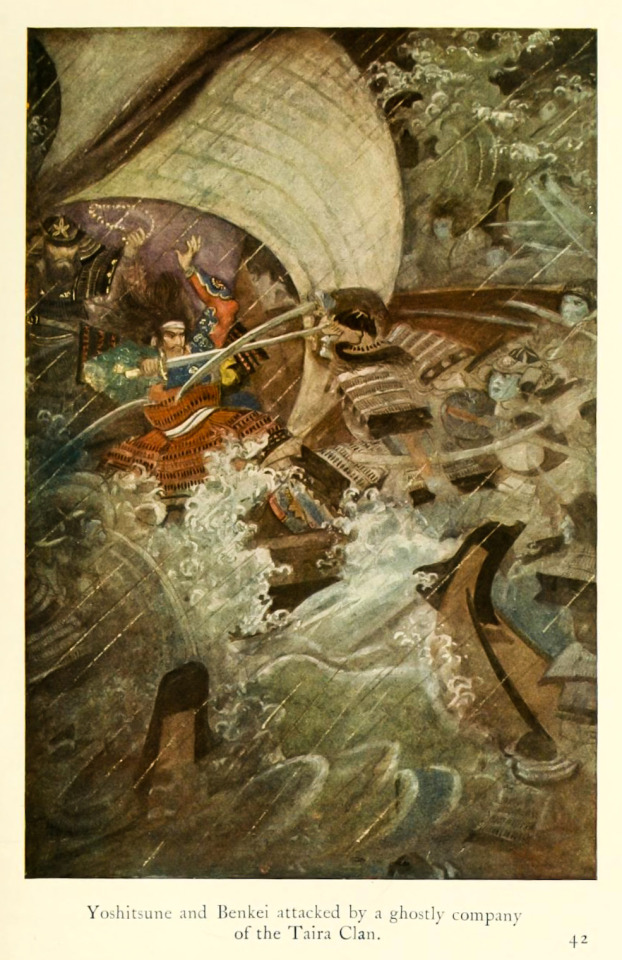

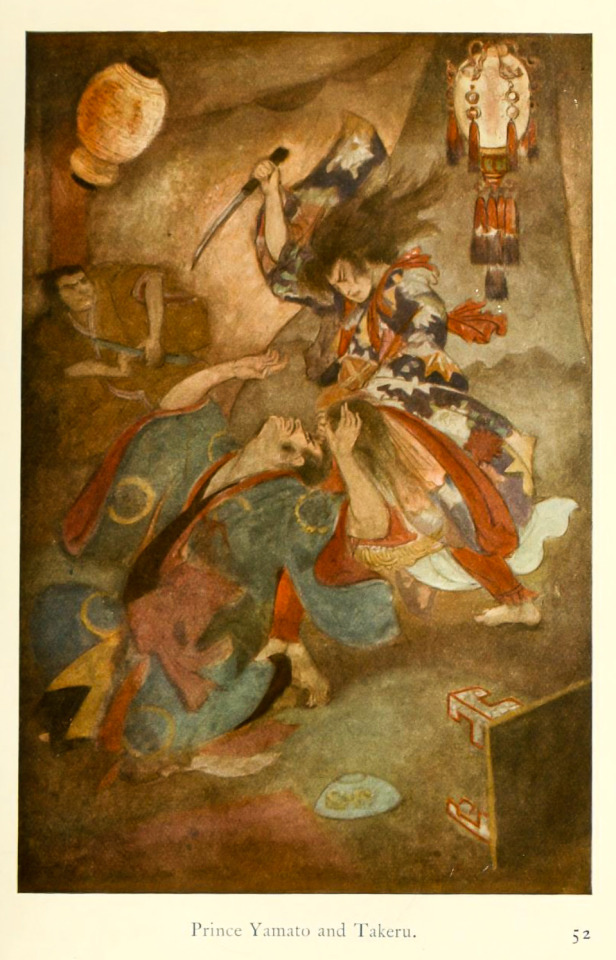
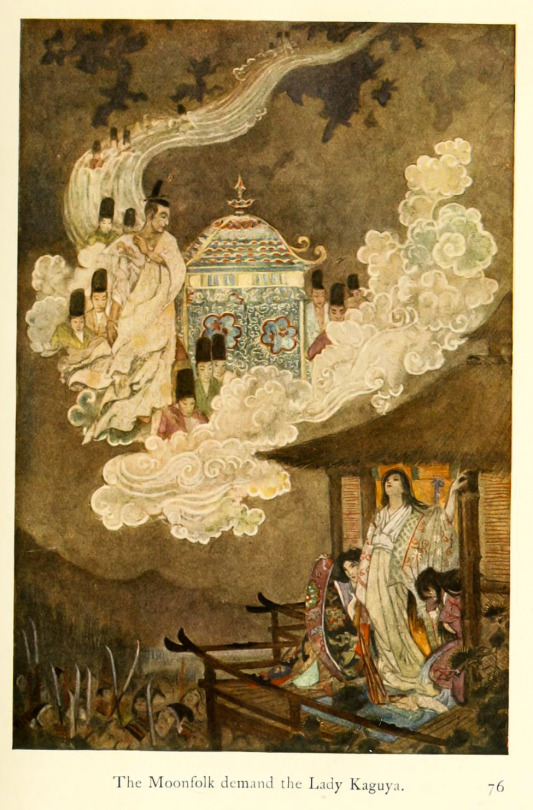


‘Evelyn Maude Blanche Paul (1883 – 1963) was an artist best known for her book illustrations, including those replicating the style of medieval illuminations. Her work shows a variety of influences including Gothic, Art Nouveau and Arts and Crafts. Most significantly, the Pre-Raphaelite artist Dante Gabriel Rossetti has been identified as one of Paul's major influences.’ —Wikipedia
source
#beautiful books#book blog#books books books#book cover#books#illustrated book#vintage books#children’s book#japanese folktale#japanese folklore#japanese mythology
27 notes
·
View notes
Text
Kuchisake-onna

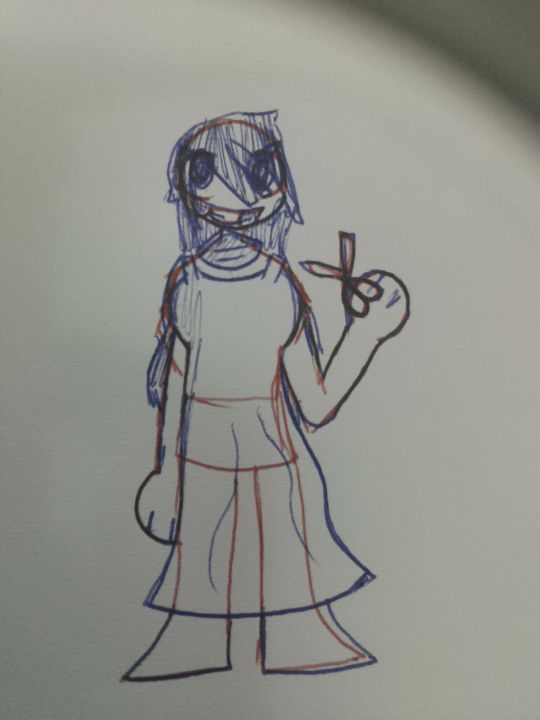

#kuchisake onna#horror#japanese urban legend#slit mouthed woman#creepypasta#Me and my sis used to be jumping on the trampoline yelling “HEY KUCHISAKE-ONNA WE'RE PRETTIER THEN YOU!!! WE'RE BEAUTIFUL!!!”#Like we just planned summoning her... WE WERE KIDS#japanese folklore#japanese folktale#japanese horror
2 notes
·
View notes